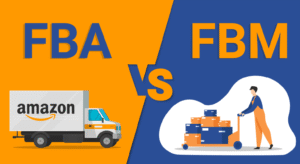
5 Mistakes to Avoid When Starting an Online Store on Amazon
The establishment of an Amazon online store represents a vital business opportunity which benefits new e-commerce entrepreneurs specifically. A substantial number of novice sellers create major errors during their initial Amazon venture which restricts their market expansion and might generate business failure. This article reveals essential errors which new Amazon sellers need to prevent from derailing their success during five key stages of development.
Fear and confusion about the correct beginning of your Amazon store can be eliminated because you have other options to help you start off right. Through our focus on assisting sellers our team at ecommanagers.com delivers specialized solutions to create lucrative Amazon stores along with guidance for product research development and inventory monitoring and customer interactions in order to scale businesses online. Bringing in suitable experts at the beginning will help you save money and time as well as lower your stress while creating your Amazon store.
Mistake 1: Choosing the Wrong Product Without Market Research
The main cause of failure among Amazon sellers stems from their selection of products that look trendy despite their low wholesale prices. Research failure leads to the danger of entering markets where competition exceeds demand or where demand is minimal.
Successful sellers use Helium 10, Jungle Scout or Google Trends as analysis tools for their operations:
- Market demand
- Seasonal trends
- Competition level
- Customer reviews
Failing to validate your product idea can lead to wasted inventory, higher storage costs, and no sales.
Mistake 2: Not Understanding Amazon’s FBA vs FBM Options

New Amazon FBA users tend to skip essential knowledge about how FBA differs from FBM (Fulfilled by Merchant) before starting their businesses. Joining FBA gives you ease of operation but it requires payment of storage expenses and packaging expenses and strict regulatory compliance.
Products that have a low turnover rate together with large dimensions could achieve better success rates under FBM. Successful long-term management requires a clear grasp of both models together with business requirements.
Mistake 3: Ignoring Amazon SEO and Listing Optimization
The platform functions as both a marketplace and an ecosystem where customers use its search engine capabilities. Amazon products that lack keyword optimization in their listings will prevent them from appearing in search results.
Most sellers implement wrong strategies in their search engine optimization practices:
- Weak product titles
- Poor bullet points and descriptions
- Not using backend search terms
- Ignoring A+ Content
Optimized listings can improve visibility, increase conversions, and lower advertising costs. Don’t treat your product page as just a description — treat it as a marketing tool.
Mistake 4: Overlooking Customer Service and Reviews
The ranking algorithm of Amazon heavily depends on customer satisfaction levels. When new sellers enter Amazon they frequently concentrate exclusively on maximizing their sales figures yet fail to deal with customer feedback.
Your brand reputation and ranking positions will suffer greatly from negative reviews and late replies or order issues. A successful strategy involves delivering excellent service alongside review initiation through approved email correspondence (per Amazon terms of service).
Mistake 5: Poor Inventory and Financial Management
Many sellers get excited after their first few sales and start investing aggressively without managing their cash flow. They don’t track profits, forget about Amazon fees, or end up with either overstocked or out-of-stock inventory.
Here’s a simple chart to help you understand the financial structure of a typical Amazon FBA business:
| Cost Element | Average % of Revenue |
| Amazon Referral Fee |
15% |
| FBA Fulfillment Fee |
10-20% |
| Product Cost |
25-35% |
| Shipping to Amazon |
5-10% |
| PPC Advertising |
10-20% |
| Net Profit |
10-20% |
Tracking these numbers monthly helps you avoid sudden losses and ensures business sustainability.
Conclusion
Luck plays no role in achieving success through Amazon Marketplace. Building success through positive decision-making and endless learning coupled with a strong awareness of common mistakes on Amazon. Creating a thriving and scalable Amazon business requires picking the appropriate merchandise alongside optimized listings together with thorough knowledge of fulfillment choices backed by meaningful customer service alongside financial monitoring.
FAQs
- What is the best product to sell for beginners on Amazon?
But there’s no one cookie cutter to the answer; in this case, be looking for lightweight, low competition products with consistency of demand and a pricerange of $20-$50. Selection can be completed with tools like Helium 10 and Jungle Scout.
- How much money do I need to start an Amazon FBA business?
Starting costs can vary, but on average, a new seller may need $1,500 to $3,000 to cover inventory, Amazon fees, shipping, and advertising.
- Can I start selling on Amazon without a company or LLC?
Yes, you can start as an individual seller. However, creating a company or registering a sole proprietorship offers legal protection and tax benefits as your business grows.
- Why are my products not showing on Amazon search?
If your listings are not optimized with the right keywords, or if they lack customer reviews, they may not rank well in search results. Also, new listings take time to gain visibility.